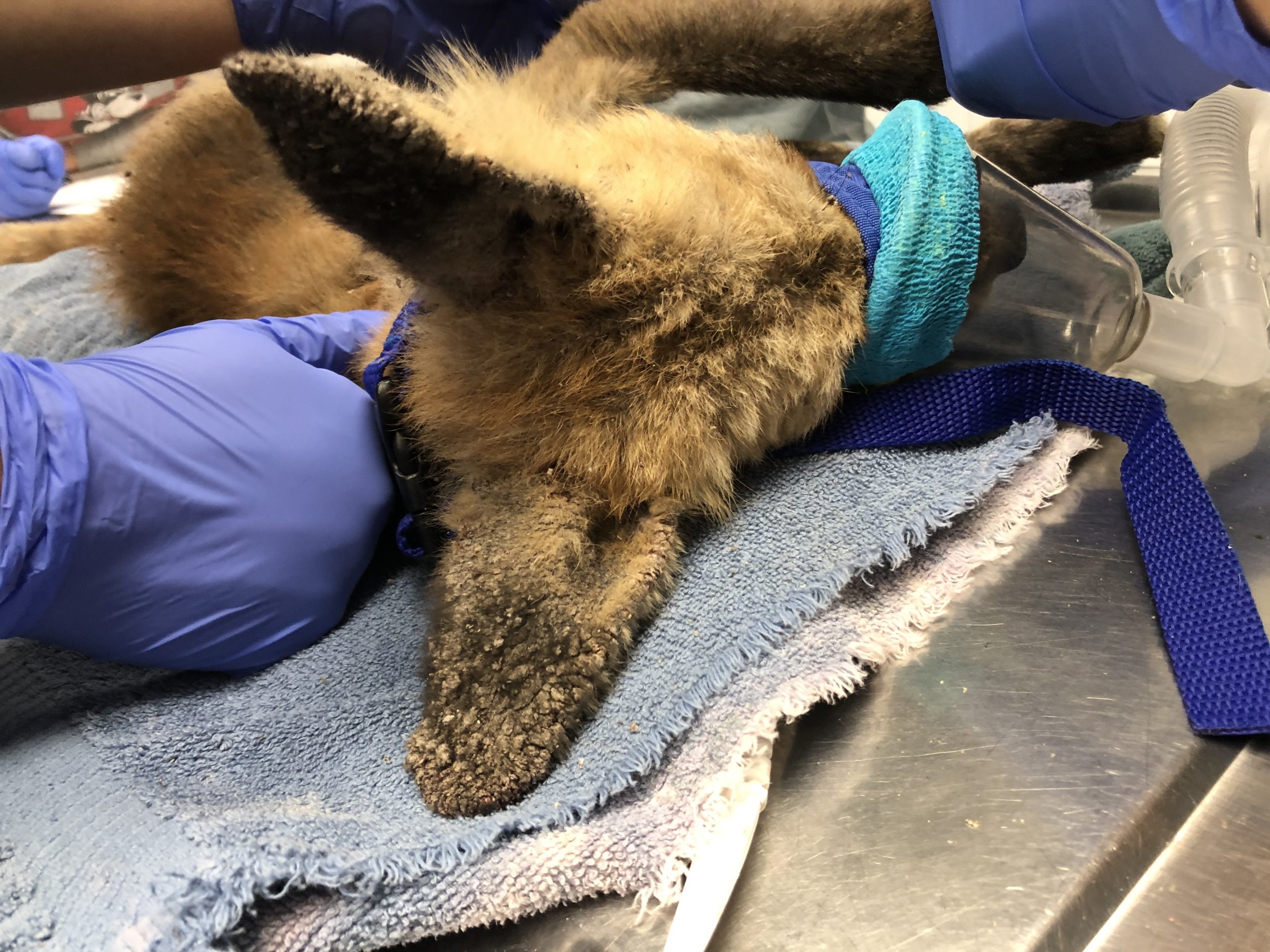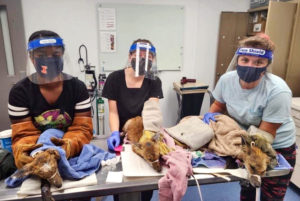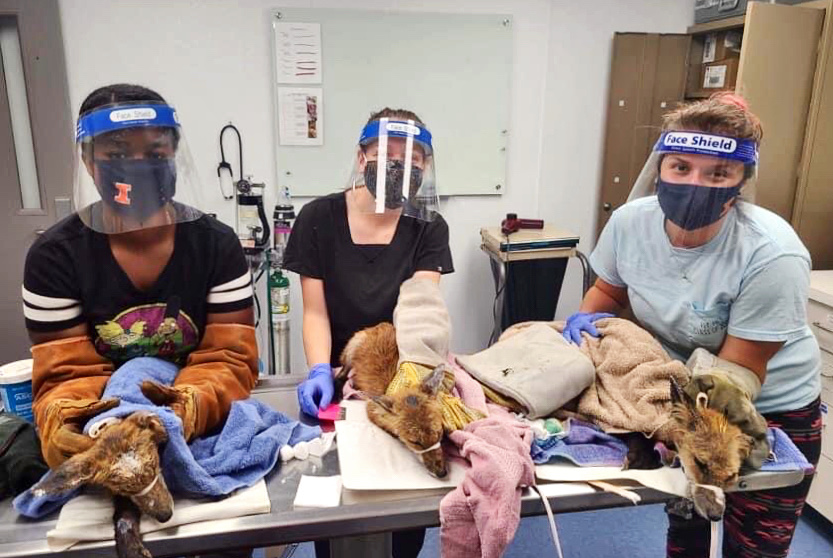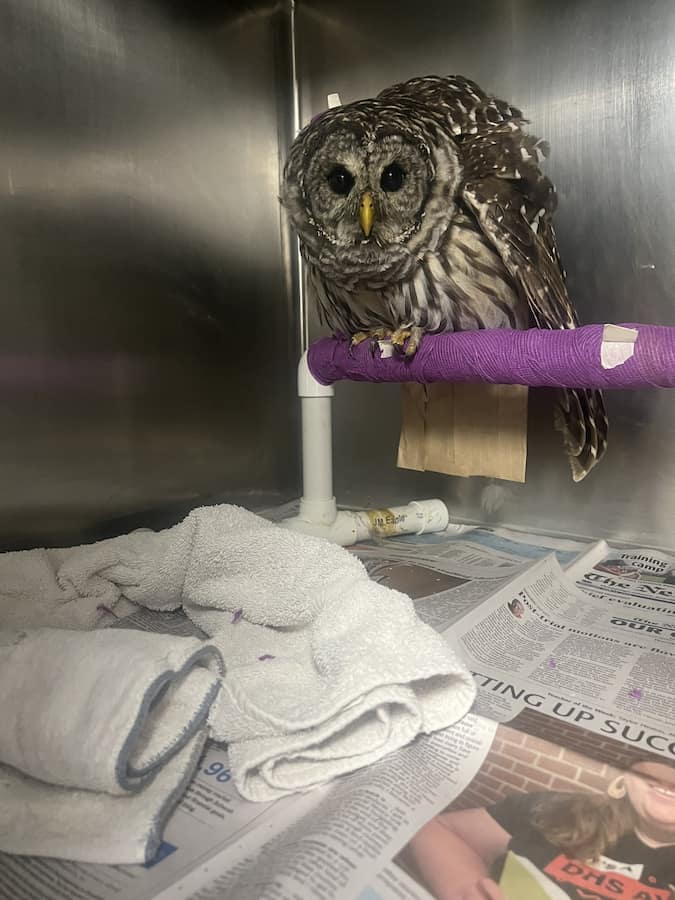Most of the red foxes (Vulpes vulpes) that present to the Wildlife Medical Clinic are underweight, lethargic, and have some severe skin disease. Their skin is dry, flaky, crusty, and sometimes even has open wounds.  They are often also missing large patches of fur throughout their body. Why do most of the foxes we see look like this? Sarcoptic mange, caused by a mite (Sarcoptes scabiei) is commonly the culprit. These mites burrow under the skin and cause an allergic-type reaction, which leads to all of the changes observed on the skin and coat. Microscopic but prolific, there can be several thousand of these mites in just one square centimeter of skin! Mites are not insects, being more closely related to spiders and scorpions.
They are often also missing large patches of fur throughout their body. Why do most of the foxes we see look like this? Sarcoptic mange, caused by a mite (Sarcoptes scabiei) is commonly the culprit. These mites burrow under the skin and cause an allergic-type reaction, which leads to all of the changes observed on the skin and coat. Microscopic but prolific, there can be several thousand of these mites in just one square centimeter of skin! Mites are not insects, being more closely related to spiders and scorpions.
Left untreated, a severe infestation of mange can be fatal to foxes, as secondary infections and starvation can lead to death. Mange is also terribly uncomfortable, causing intense itchiness and open sores.  Fortunately, this infection can be treated by a veterinarian if caught early enough in the disease process. We use a combination of anti-inflammatory, immune modulating, antibiotic, analgesic, and anti-parasitic medications to treat the disease and help provide some much-needed relief to these animals. The fox often also benefits from carefully formulated diets, fluid therapy, and medicated baths to help get them feeling better as quickly as possible.
Fortunately, this infection can be treated by a veterinarian if caught early enough in the disease process. We use a combination of anti-inflammatory, immune modulating, antibiotic, analgesic, and anti-parasitic medications to treat the disease and help provide some much-needed relief to these animals. The fox often also benefits from carefully formulated diets, fluid therapy, and medicated baths to help get them feeling better as quickly as possible.
So, what should you do if you see a mangy fox? First, safely catch the fox if you can. Often, this means using a live trap, which is a small metal cage that has a trip bar that closes the door behind the fox – trapping it without hurting it. As fox can be quite crafty and some municipalities regulate trapping of wild animals, you may want to consider hiring a professional animal trapper to help.  Remember, even though these foxes are very sick, their survival instincts will tell them to bite you if they feel threatened. Unfortunately, they do not understand that you are just trying to help. Next, bring the fox to our expert doctors and awesome student volunteers at our Wildlife Medical Clinic. We will evaluate the fox and determine the best course of treatment. If you have any questions about mange in foxes or any wildlife issue, please visit our website or send us a message on social media (Facebook: @UIWMC). We love to hear from you!
Remember, even though these foxes are very sick, their survival instincts will tell them to bite you if they feel threatened. Unfortunately, they do not understand that you are just trying to help. Next, bring the fox to our expert doctors and awesome student volunteers at our Wildlife Medical Clinic. We will evaluate the fox and determine the best course of treatment. If you have any questions about mange in foxes or any wildlife issue, please visit our website or send us a message on social media (Facebook: @UIWMC). We love to hear from you!
Written by Caralee Stover, class of 2023




